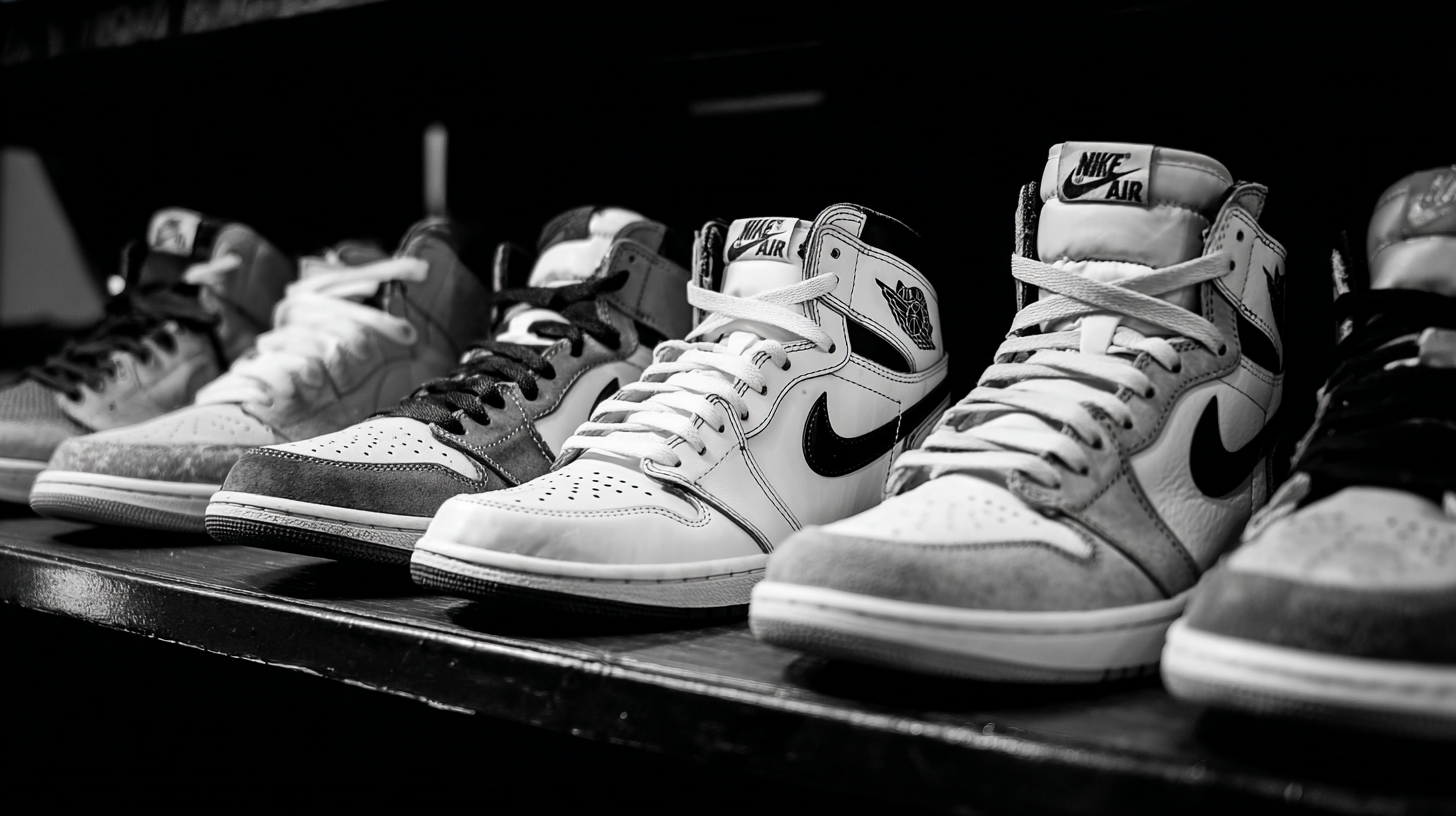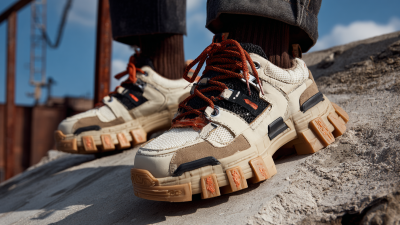
The evolution of sneakers has transformed them from mere sports gear to highly sought-after fashion statements, reflecting broader trends in consumer behavior and the fashion industry. According to a report by NPD Group, the U.S. sneaker market alone generated over $24 billion in sales in 2020, with a significant portion driven by lifestyle and fashion-oriented purchases. This shift is further underscored by the rise of sneaker collaborations and limited-edition drops, which have spurred a frenzy among collectors and fashion enthusiasts alike. In 2021, resale values for popular sneakers soared, with some pairs fetching upwards of 300% above retail prices. As sneakers continue to gain prominence on runways and in streetwear culture, they exemplify a unique fusion of athletic performance and high-end fashion, reshaping not only how we view footwear but also how we engage with our personal style.

The evolution of sneakers from mere sports gear to a prominent fashion statement can be traced back to their historical roots, where athletic design significantly influenced casual wear. Originally, sneakers were crafted for functionality, prioritizing performance over style. According to a report by Grand View Research, the global athletic footwear market was valued at approximately $64.3 billion in 2020, underlining the growing interest in shoes designed for athletic activities. This surge in athletic culture paved the way for casual wear to adopt these designs, as consumers increasingly sought comfort and performance in everyday attire.
As brands began to innovate, the design of sneakers evolved, integrating advanced materials and technologies. Industry experts from Statista predict that the sneaker market is projected to reach $100 billion by 2025, signifying that the appeal of sneakers has transcended their athletic origins. This shift not only reflects an increase in sports participation but also highlights how aesthetics have become paramount. Fashion icons and celebrities have further propelled sneakers into the spotlight, showcasing them as essential components of streetwear and high fashion. Today, sneakers embody a blend of functionality and style, illustrating the profound impact of athletic design on contemporary casual fashion.
Sneaker culture has evolved dramatically over the past few decades, transitioning from a utilitarian sports accessory to an emblem of urban fashion. The rise of this culture can largely be attributed to the intersection of athletics and lifestyle branding. According to a report by Statista, the global sneaker market is projected to reach approximately $120 billion by 2026, highlighting the booming demand for stylish yet functional footwear. This growth is fueled by collaborations between high-profile athletes and fashion designers, which have made sneakers not just a choice for sports enthusiasts, but a staple in everyday fashion.
Furthermore, social media has played a pivotal role in shaping sneaker culture as it democratizes fashion and amplifies niche markets. Platforms like Instagram showcase influencers and celebrities showcasing their sneaker collections, fostering a vibrant community around sneaker appreciation. Industry reports indicate that around 70% of sneaker purchases are influenced by social media marketing, reinforcing the idea that the court no longer solely defines sneaker culture—it's now thriving on the streets and within urban fashion scenes. This cultural shift signifies the transformative power of sneakers, as they become not just a piece of athletic gear but a canvas for self-expression and personal style.

The world of sneakers has transcended its athletic origins to become a significant element of fashion culture. Collaborations between renowned designers and sports brands have led to exclusive and highly sought-after sneakers, driving a booming market. According to a report by Statista, the global sneaker market is projected to reach over $100 billion by 2025, illustrating the growing intersection of functionality and fashion.
Fashion icons like Kanye West and Virgil Abloh have taken sneaker culture to new heights, launching collections that blend streetwear with high fashion. Their collaborations with brands like Adidas and Nike not only set trends but also influence consumer behavior, as illustrated by a McKinsey report highlighting that 70% of sneaker enthusiasts believe limited-edition releases bolster their social status. These partnerships exemplify how sneakers are no longer merely footwear but a statement of identity.
**Tips:** When choosing sneakers as a fashion statement, consider versatility. Opt for classic styles that can be paired with various outfits, from casual to semi-formal. Additionally, keep an eye on upcoming collaborations to snag exclusive items that could become valuable collectors' pieces. Staying informed about emerging trends can significantly enhance your sneaker game.
| Year | Event | Impact on Fashion | Notable Collaborations |
|---|---|---|---|
| 1980 | Introduction of Polyester Sneakers | Became lightweight and suitable for everyday wear. | None |
| 1996 | The Rise of Sneakers in Pop Culture | Influenced street style; sneakers seen in music videos. | Notable artists collaborated with designers. |
| 2003 | Launch of High-End Sneaker Lines | Bridged the gap between sports and luxury fashion. | Collaborations with fashion designers. |
| 2010 | Sneakers on Runways | Solidified their status as high fashion items. | Multiple designers featured sneakers. |
| 2020 | Sustainable Sneaker Movement | Shift towards eco-friendly materials. | Collaborations focused on sustainability. |
The evolution of sneakers has significantly been influenced by technological innovations that enhance both performance and style. Recent advancements in footwear technology have resulted in products designed to meet the evolving demands of athletes and fashion enthusiasts alike. For instance, the introduction of customizable containment systems in golf footwear allows athletes to optimize their fit and stability on the course, showcasing a blend of functionality and comfort. Such innovations not only enhance athletic performance but also cater to the growing trend of personalization in sports gear.
Moreover, the integration of smart technologies and advanced materials is revolutionizing the running shoe market. New models are being engineered with improvements that enhance running efficiency while addressing injury risks. These advancements include bio-based materials and smart textiles, pushing the boundaries of what athletic footwear can achieve. This technological drive not only elevates sports performance but also aligns with sustainability efforts, demonstrating how footwear innovation can lead to a new standard in both functional and eco-friendly options. As consumer expectations shift towards high-performance and socially responsible products, the intersection of technology and fashion in sneakers continues to evolve.

The sneaker industry has undergone a significant transformation in recent years, shifting towards sustainability in production practices. According to a report from Grand View Research, the global sustainable sneaker market is projected to reach $5.25 billion by 2025, reflecting a growing consumer demand for eco-friendly options. As brands recognize the environmental impact of traditional sneaker manufacturing, many are adopting innovative materials and production processes designed to minimize waste and carbon footprints.
For instance, companies like Adidas have made strides in utilizing recycled materials in their sneaker production, incorporating ocean plastic and agricultural waste into their designs. A 2021 study from the Sustainable Apparel Coalition reported that footwear accounts for approximately 10% of global carbon emissions, making the shift towards sustainable practices not just beneficial, but essential. Likewise, initiatives like Nike's Move to Zero campaign aim to achieve zero carbon and zero waste, highlighting a responsibility to nurture the planet while still catering to fashion-forward consumers. As sustainability becomes a focal point, it signals a pivotal moment where functional sports gear evolves into a compelling fashion statement with a conscience.






